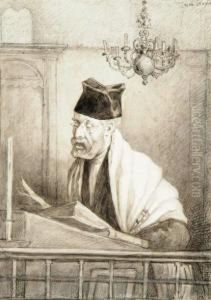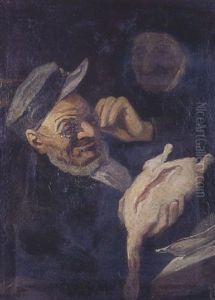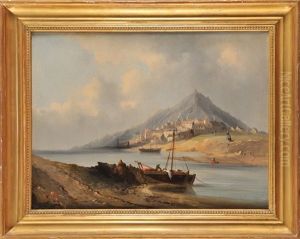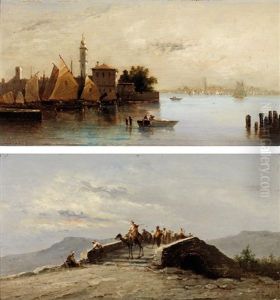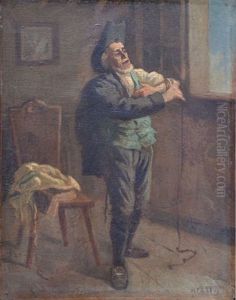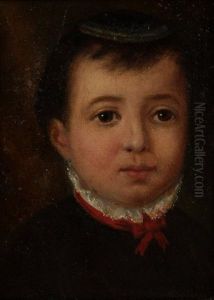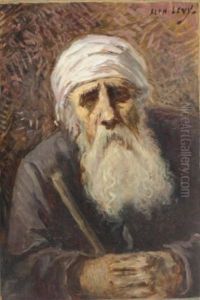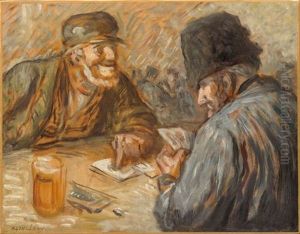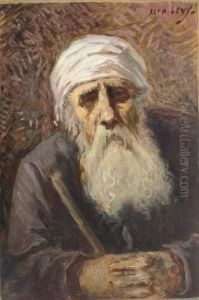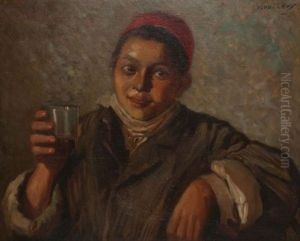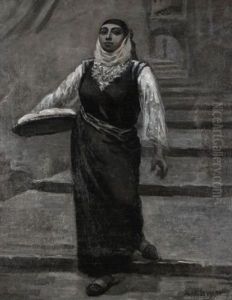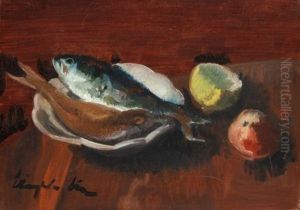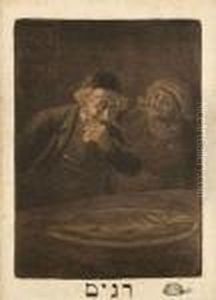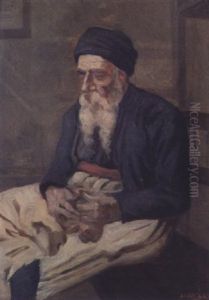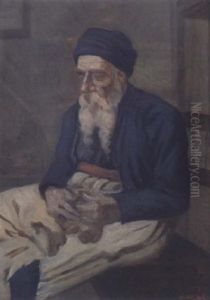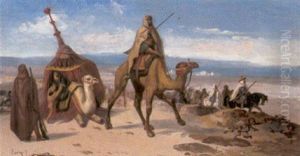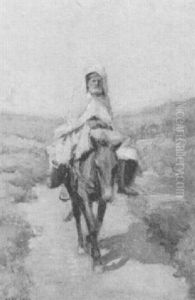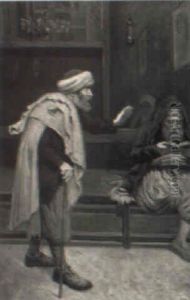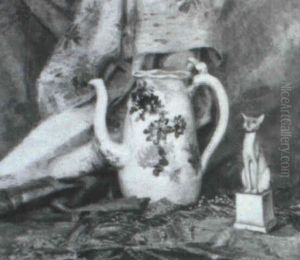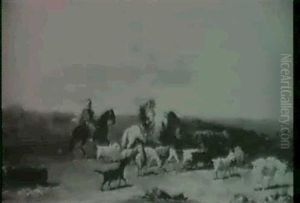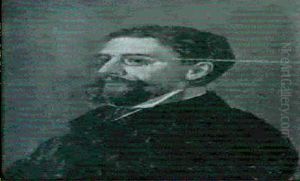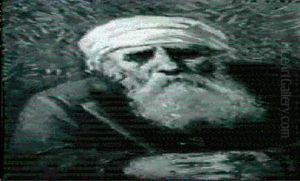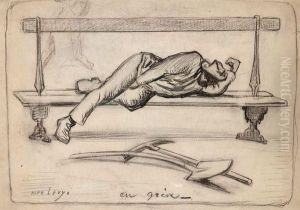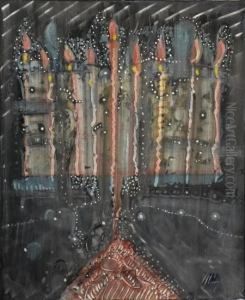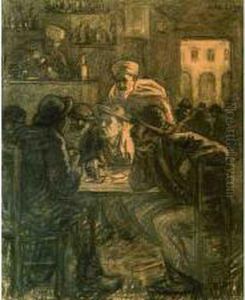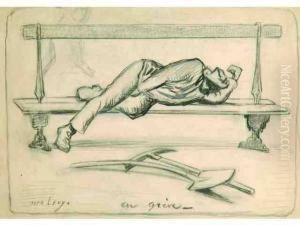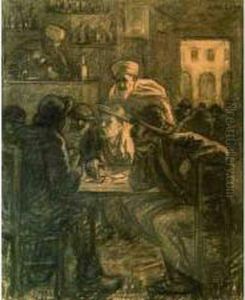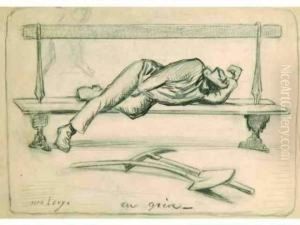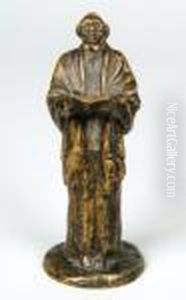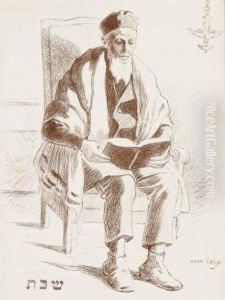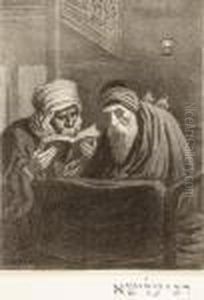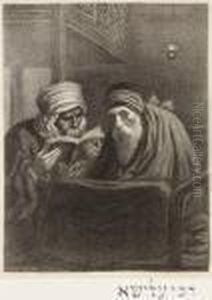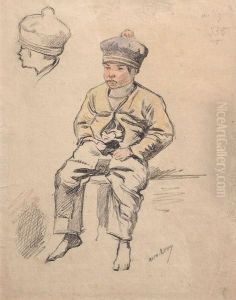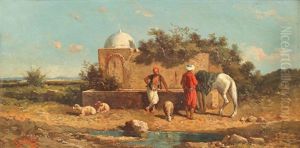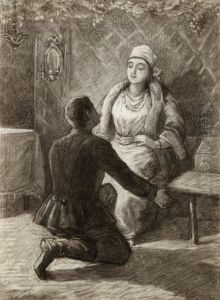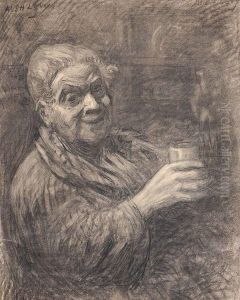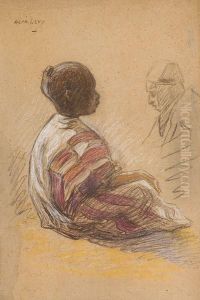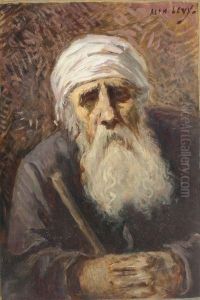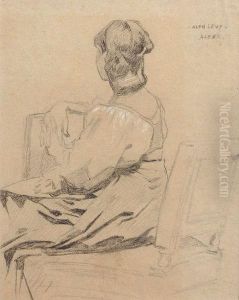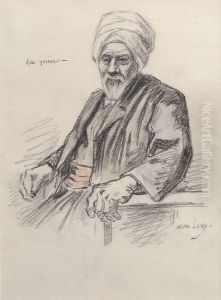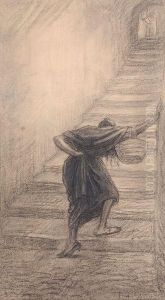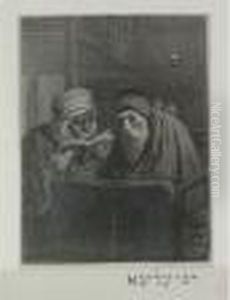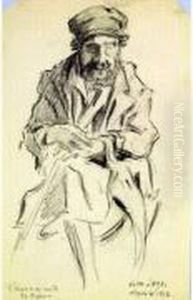Alphonse Levy Paintings
Alphonse Lévy was a French genre painter, illustrator, caricaturist, and lithographer. He was born on July 8, 1843, in Marmoutier, France, and is often remembered for his depictions of Jewish life in Europe. His artwork provides a valuable and insightful look into the customs and daily existence of Jews during the late 19th and early 20th centuries, a period of significant change and upheaval for European Jewry.
Lévy studied art at the École des Beaux-Arts in Paris under the tutelage of artists like Jean-Léon Gérôme and Alexandre Cabanel. His education and talent equipped him to explore a variety of subjects in his work, including genre scenes, religious ceremonies, and everyday life. He was particularly noted for his ability to capture the expressions and mannerisms of his subjects with both humor and sensitivity.
Throughout his career, Lévy contributed illustrations to various French periodicals and published works. His illustrations appeared in books such as 'Le Juif polonais' by Élie Berthet and 'Le Petit Chose' by Alphonse Daudet. He exhibited his paintings in various salons and received positive recognition for his contributions to French art.
Alphonse Lévy's work is characterized by its vivid realism and often satirical nature, which at times brought him criticism. However, his authentic portrayal of Jewish culture, with all its complexities and nuances, has cemented his place as an important figure in the world of art. His legacy lives on in the collections of various museums and galleries that preserve and display his work.
Lévy's artistic output reflects a period of rich cultural exchange and the dynamics of a society grappling with modernity and tradition. His death on November 17, 1918, marked the end of a prolific career that left behind a body of work that continues to be studied and appreciated for its historical and cultural significance.
